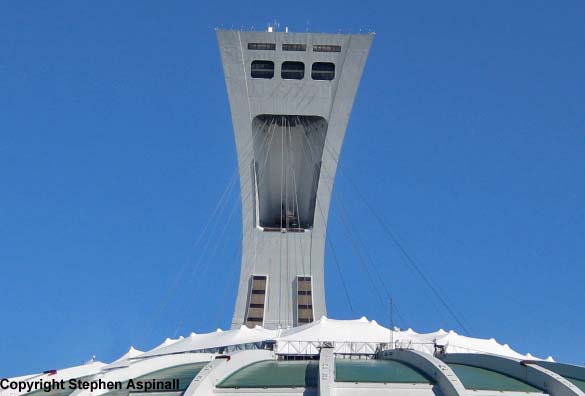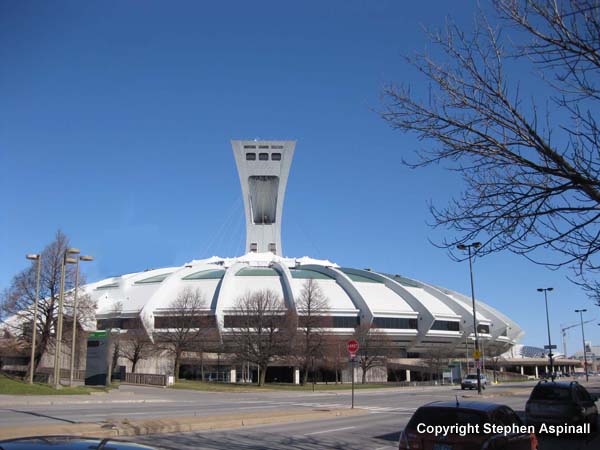| Architect |
Roger Taillibert |
| Date
Built |
1976 |
| Location |
Pierre de Coubertin Avenue, Montreal |
| Description |
|
The Olympic
Stadium was one of a series of buildings
designed by the French architect, Roger
Taillibert, for the 1976 Summer
Olympics. His futuristic design
featured a doughnut-shaped stadium,
affectionately known as the Big-O, with an
inclined tower from which a series of
cables suspended a retractable roof.
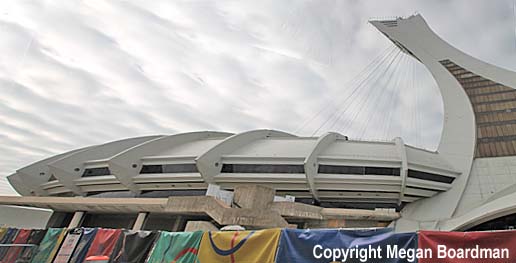 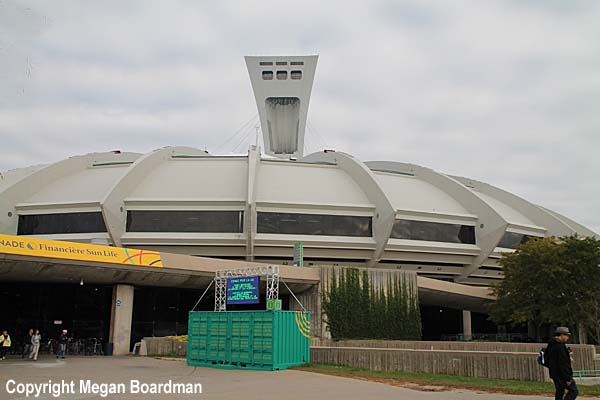 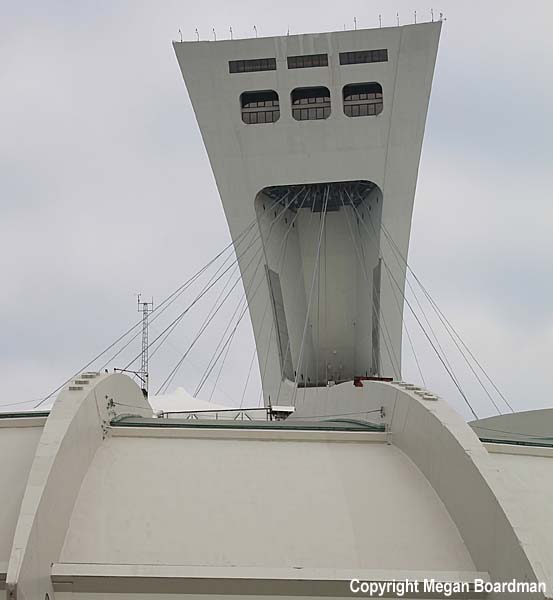 Despite the claims of Montreal's mayor, Jean Drapeau, that the Olympics could no more have a financial deficit than a man could have a baby, the fact is that it took 30 years for the city to finish paying for this adventure. Among the reasons for the financial over-runs was the stadium and its retractable roof and it wasn't long before the "Big-O" became known as the "Big-Owe". The stadium opened in 1976 without the retractable roof and with concerns over the structural integrity of the leaning tower that weren't resolved until the 1980s. In 1987 the stadium was equipped with an orange and silver kevlar roof canopy that was retractable when hoisted by its 26 steel cables. 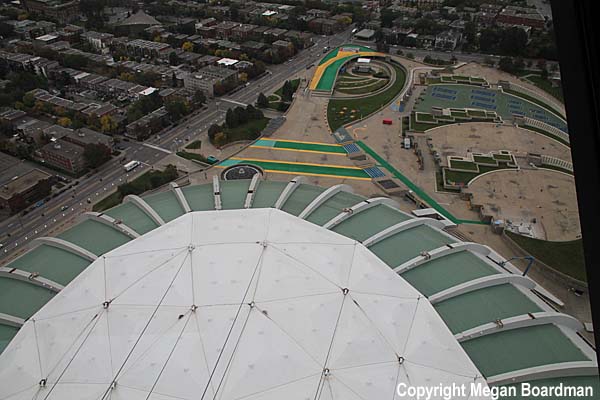 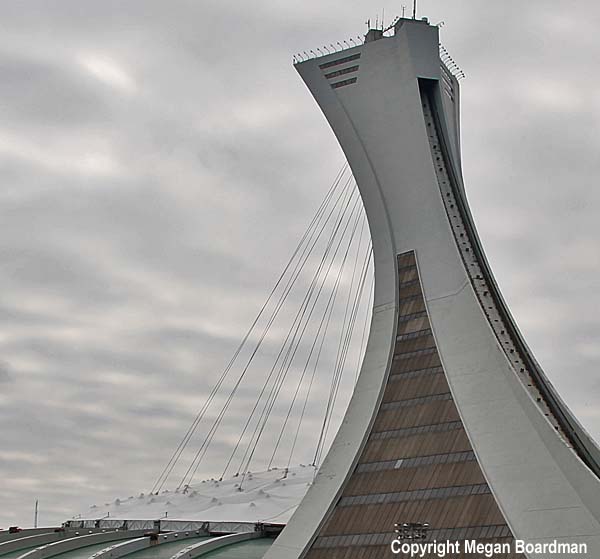 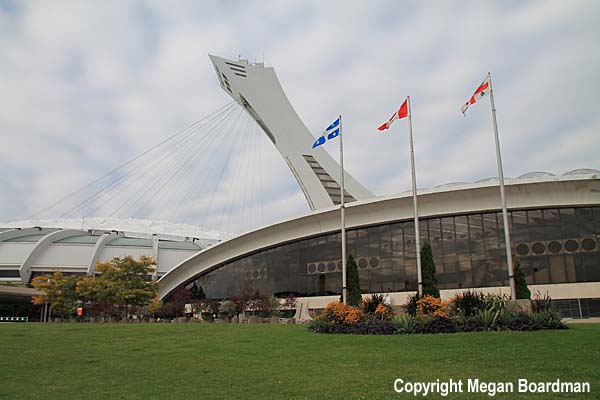 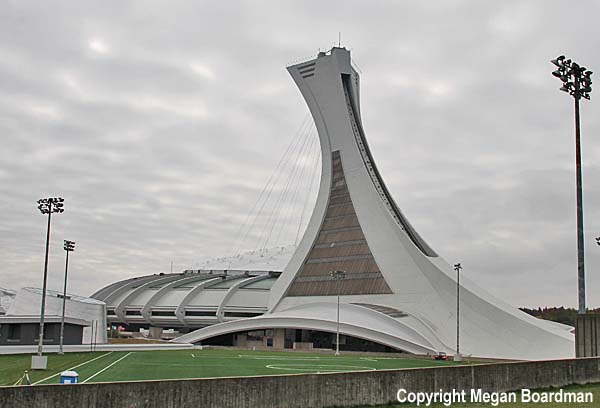 However, mechanical failures along with rips and tears in the roof finally resulted in its replacement with a fixed roof made of a blue, teflon-coated fabric. 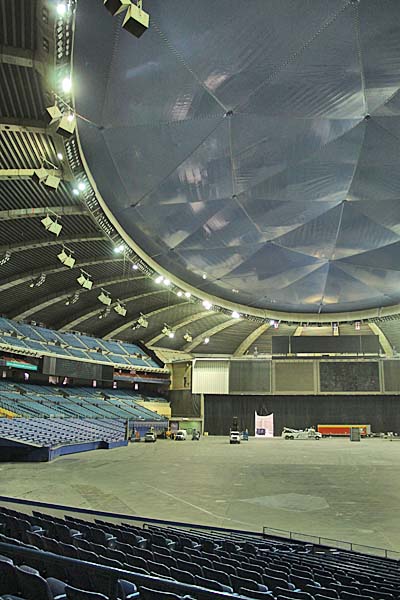 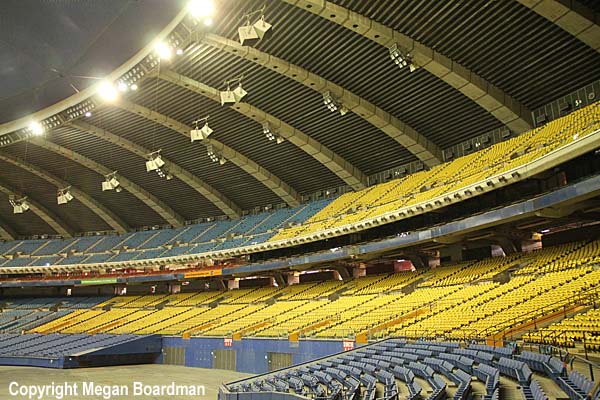 Problems were not restricted to the roof. In 1986 a large chunk of concrete fell off the tower onto the field during a baseball game and as recently as March of 2012 a concrete block measuring 8 x 12 meters in size fell from the ceiling of an underground parking facility in the stadium. Since 1976 the stadium has hosted a major league baseball team, a Canadian Football League Franchise, concerts and other events but today it has become something of a white elephant and the city is contemplating the future of this building that has cost it a $Billion to build and maintain. The tower features an observatory and a double-decker funicular-style elevator that takes tourists up the outside of the tallest inclined tower in the world to get a view of the Olympic Park and the city beyond. 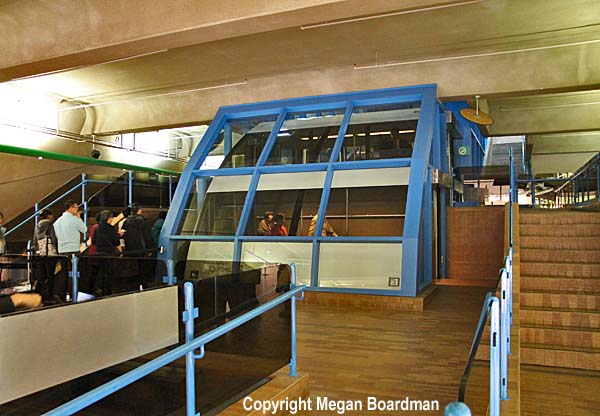 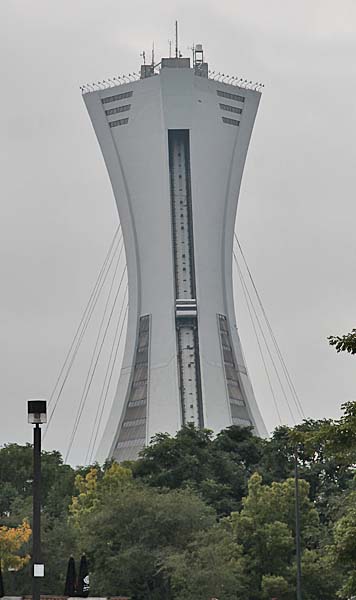  At the base of the
tower is the former olympic pool that
had a spectator capacity of 10,000 in
1976 that was reduced post olympics to
3,012.
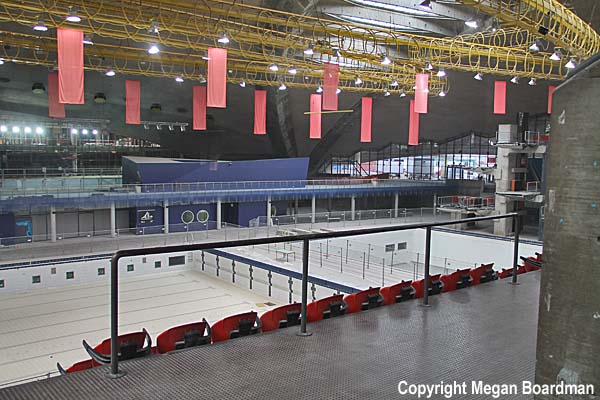 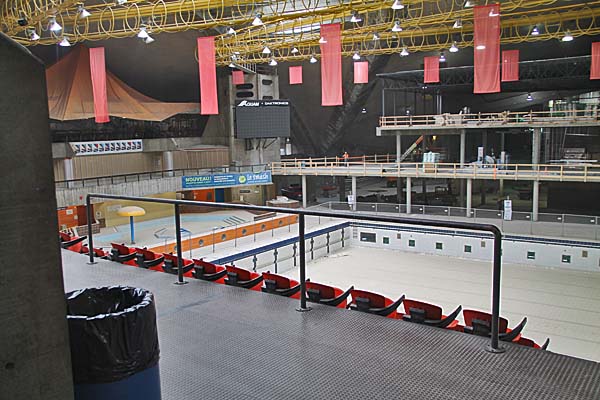 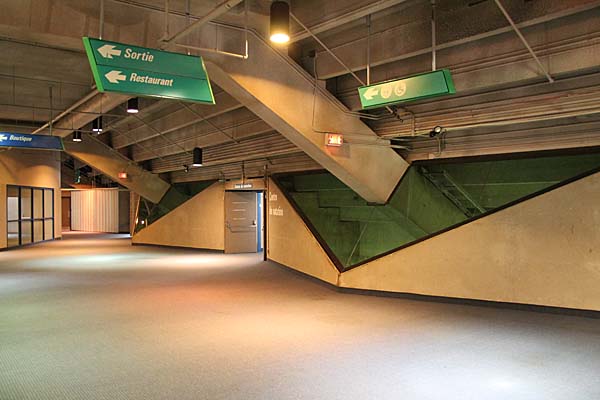 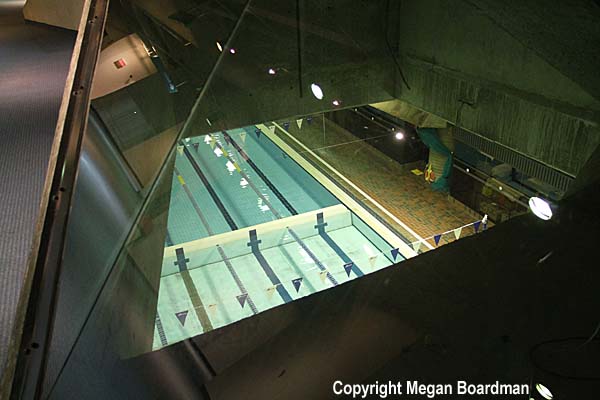 |
|
|
Olympic
Stadium, Montreal, Canada
 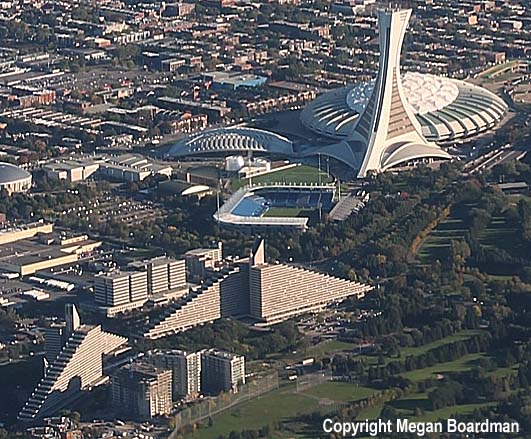 - More views - inside and out -
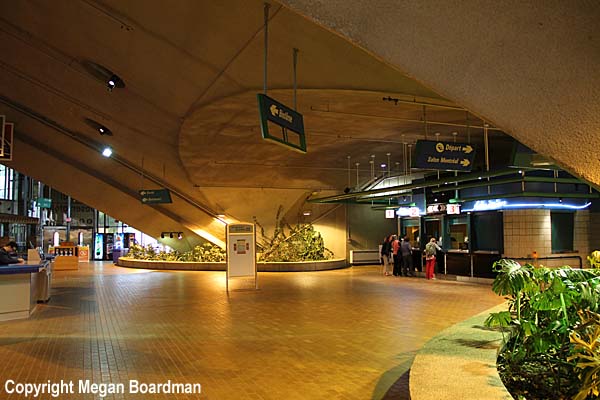 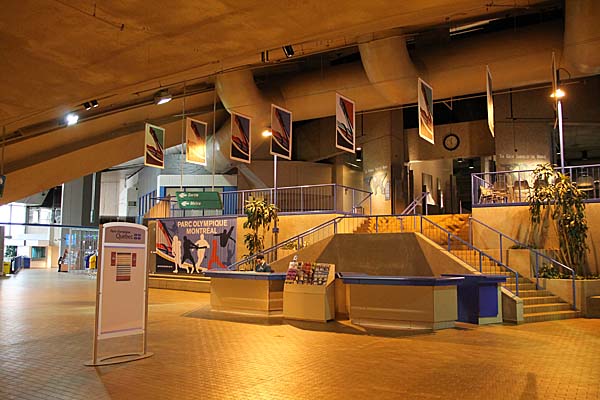 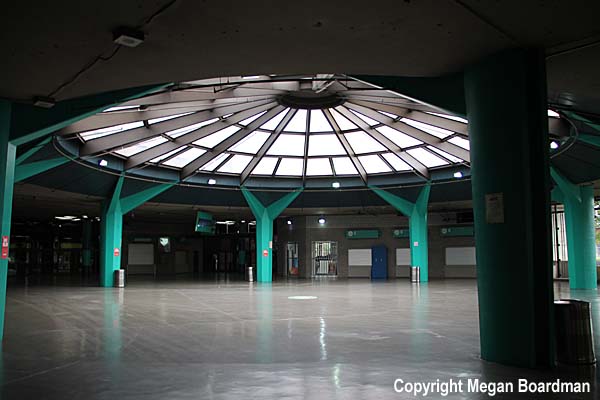 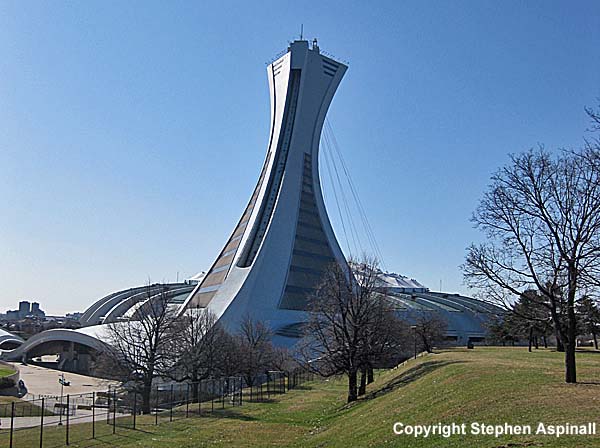 |
